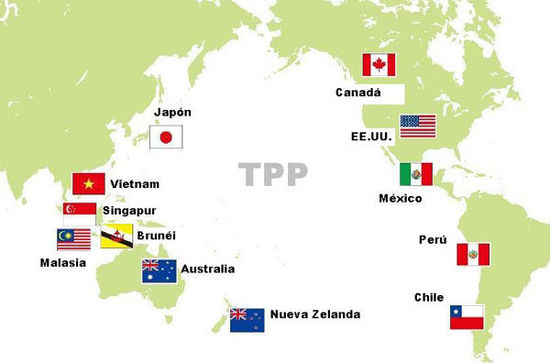

 |
| (File photo) |
The negotiation over the US-initiated Trans Pacific Partnership (TPP) is reported to be entering the final round. Trade ministers from 12 countries are convening a meeting from Tuesday to Friday on the Hawaiian island of Maui, with the goal of wrapping up the deal. If the deal is finalized within this year, it would be considered a major US achievement. Some relatively radical and optimistic US analysts believe that the conclusion of the TPP will become a landmark of US-dominated global trade rules, and China will once again be driven into a corner.
In asking how much influence the TPP will have on trade patterns in the Asia-Pacific region, the answer does not depend entirely on the deal itself. What happens in the realm of global trade depends on a variety of practical factors, especially the irreplaceable role of "interests." All Asia-Pacific nations are striving to maximize their own national interests, yet no single multilateral or bilateral trade deal can meet these needs. Therefore, one country will simultaneously join different trading systems to gain as much benefit as possible.
Although US President Barack Obama has said that "if we don't write the rules, China will write the rules out in that region," it is still hard to say whether the TPP will thus become a new US tool of geopolitical competition against China. But one thing is certain, most of the other 11 nations that are negotiating with Washington over the TPP have no interest in this regard.
China is now promoting the Free Trade Area of the Asia-Pacific (FTAAP), and has already signed bilateral free trade deals with South Korea and Australia. In the meantime, Australia is also crucial to the TPP negotiations. It shows the universal mentality of countries in the Asia-Pacific - all potential interests are welcome.
China is the largest trading nation in the region, as well as the second-largest economy in the world. The temptation of its market potential is irresistible. The TPP will hence find it hard to capture all the member states' hearts.
There is a sharp difference in terms of the development level and the social governance model among all 12 TPP nations. If the deal is to be completed, the US will have to lower its standards over labor and environmental protection. In the end, the deal will only be a compromised version.
China's GDP is almost equivalent to all 11 countries combined except for the US in the TPP negotiations. China's economic presence and influence in the Asia-Pacific can neither be ignored nor bypassed. Even the White House is positive toward expanding bilateral trade with Beijing. The days of US dominance over the Asia-Pacific economic map may already be over.
Chinese people should be confident while observing the development of talks on the TPP, and calmly measure the relationship between the promotion of the FTAAP and whether to join the TPP. On this issue, our focus should not be on geopolitics.
When or if the TPP is signed, the positive or negative impacts it will have on China cannot be seen clearly for now, neither can they be precisely estimated by the US. Today's China is capable of handling the uncertainties of international trade, and is no longer in the position where it can be steamrollered or coerced into signing treaties.
 Student proposes during graduation ceremony
Student proposes during graduation ceremony China-made special vehicles in exhibition
China-made special vehicles in exhibition Soldiers serving at Liaoning aircraft carrier
Soldiers serving at Liaoning aircraft carrier Bikini beauties lifeguards in river rafting place
Bikini beauties lifeguards in river rafting place PLA soldiers eat raw snake meat in harsh training
PLA soldiers eat raw snake meat in harsh training Kiss contest held in Nanning, SW China
Kiss contest held in Nanning, SW China Yunnan-Myanmar Road: The past and present
Yunnan-Myanmar Road: The past and present Photos of beautiful policewoman become online hit
Photos of beautiful policewoman become online hit Campus belle of Xiamen University gets popular online
Campus belle of Xiamen University gets popular online Gettin’ Bei-jiggy
Gettin’ Bei-jiggy Diplomats risk own lives for China’s future
Diplomats risk own lives for China’s future Infrastructure projects needed for stability: experts
Infrastructure projects needed for stability: experts Chinese student detained in Iraq freed, to return home soon
Chinese student detained in Iraq freed, to return home soonDay|Week